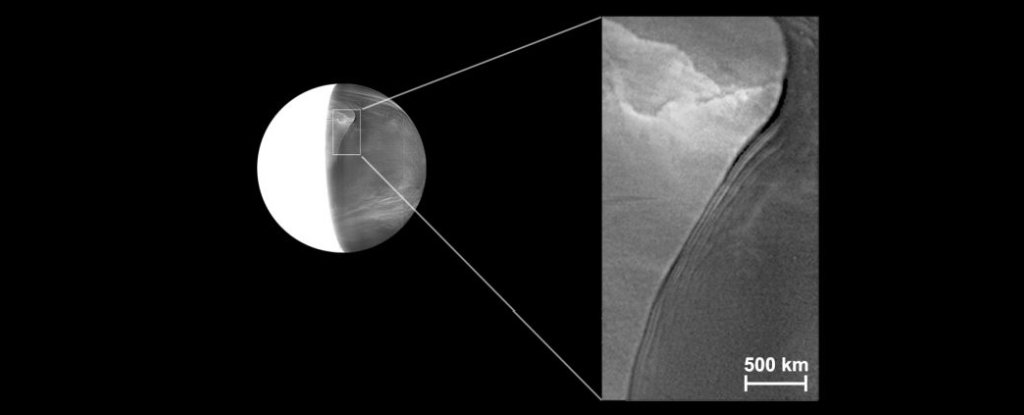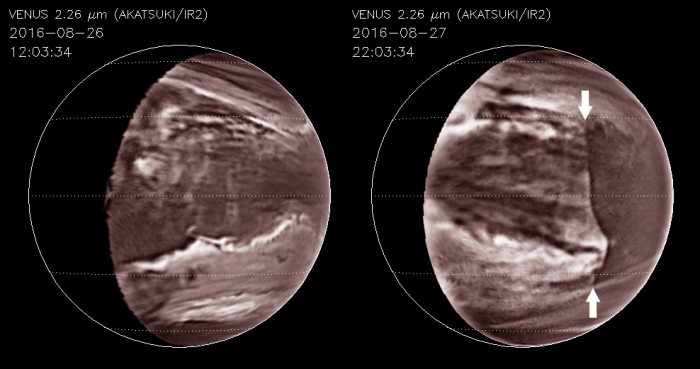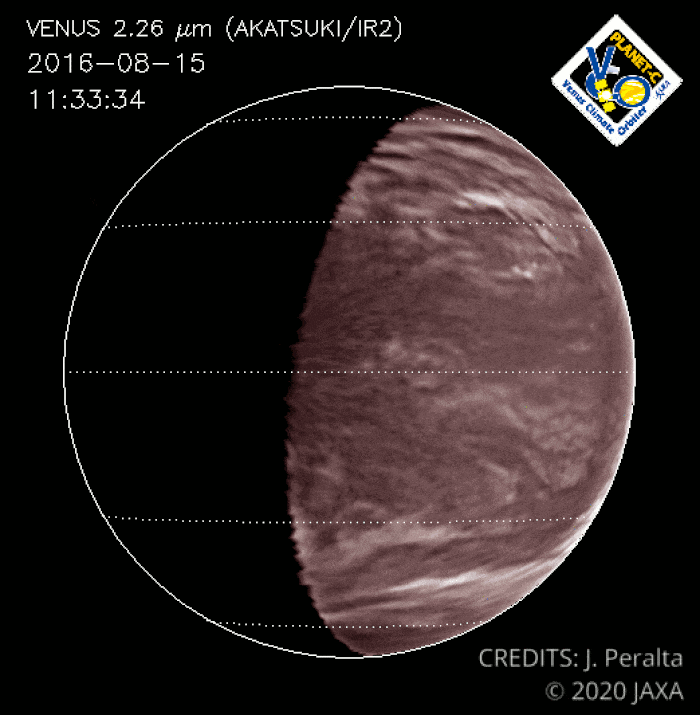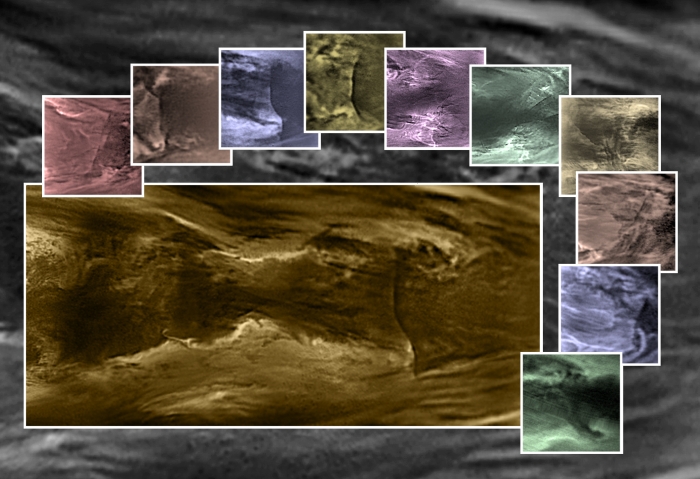
Somewhere down in the thick, toxic mists folded over Venus, the environment is carrying on strangely. A mammoth, already obscure planet-scale mass of cloud ventures toward the west around earth each 4.9 days - and clearly has been doing as such since at any rate 1983.
It can reach out as much as 7,500 kilometers (4,660 miles) in length, extending over the equator to both the north and south mid scopes, at generally low heights somewhere in the range of 47.5 and 56.5 kilometers. It's a wonder that is never been seen anyplace else in the Close planetary system.
"On the off chance that this occurred on Earth, this would be a frontal surface at the size of the planet," said astrophysicist Pedro Machado of the Establishment of Astronomy and Space Sciences in Portugal.
"That is staggering."
 The planet-scale wave feature. (Javier Peralta/JAXA-Planet C team)
The planet-scale wave feature. (Javier Peralta/JAXA-Planet C team)Venus is an outrageous kind of spot for a rough tenable zone planet. It's totally covered in a thick climate made up as a rule of carbon dioxide that pivots multiple times quicker than the planet itself, delivering crazy breezes.
The climate downpours sulfuric corrosive, and its air pressure at 0 elevation is just about multiple times more prominent than Earth's. On the off chance that that weren't terrible enough, it's lander-meltingly hot, with a normal surface temperature of 471 degrees Celsius (880 degrees Fahrenheit).
That shady environment is a captivating spot, and inclined to tremendous waves. A bow-like structure 10,000 kilometers in length that travels every which way in the upper air is a fixed gravity wave, thought to be produced by the pivoting environment exploding against a mountain on a superficial level. Another planet-circling Y-formed wave in the cloudtops is a wave contorted by Venus' incredible breezes.
In any case, there's additional. When contemplating infrared pictures taken by Japanese Venus orbiter Akatsuki somewhere in the range of 2016 and 2018, a group of analysts drove by physicist Javier Peralta of the Japanese Space Organization (JAXA) recognized an element that looked a great deal like a climatic wave, yet at an uncommon elevation.
The new element is unique. It's a lot further than any climatic wave at any point seen before on Venus, happening in the cloud layer liable for the nursery impact that makes the surface so scorchingly hot.
Cautious investigation, just as an investigation of past perceptions, demonstrated that the element has been repetitive, however up to this time unnoticed, since in any event 1983, since it could just rise through an assortment of perceptions from countless instruments over some stretch of time.

The planet-scale wave feature. (Javier Peralta/JAXA)
The recently recognized element, the analysts found, can range as much as 7,500 kilometers, and circles the planet once every 4.9 days at a speed of around 328 kilometers for each hour (204 miles for each hour). That is somewhat quicker than the mists at this level, which have a turn time of about 5.7 days.
Be that as it may, it's as yet obscure what causes it.
"This barometrical disturbance is another meteorological wonder, inconspicuous on different planets. In view of this it is yet hard to give a certain physical understanding," Peralta said.
Numerical reproductions, be that as it may, uncover that a considerable lot of the disturbance's properties can be found in a nonlinear environmental Kelvin wave. Here on Earth, these are enormous gravity waves (not to be mistaken for gravitational waves) that are at times 'caught' at the equator and are influenced by the planet's revolution.
Like Earth's Kelvin waves, the Venusian include spreads a similar way as the breezes that circle the planet - and it has no impact on meridional breezes that blow among north and south.

The feature in August 2016 (bottom left) and its evolution from 2016 to 2018 (inset). (Planet-C Project Team, NASA, IRTF)
On the off chance that the element is a Kelvin wave, that could have intriguing ramifications. We don't, for example, comprehend why Venus' environment pivots so quick. Kelvin waves can collaborate with different sorts of environmental waves, for example, Rossby waves.
This could have suggestions for the environmental super-turn. Furthermore, a Kelvin wave could likewise assist us with understanding the connection between Venus' surface geology and the elements of its environment.
"Since the interruption can't be seen in the bright pictures detecting the head of the mists at around 70 kilometers stature, affirming its wave nature is of basic significance," Peralta said.
"We would have at long last discovered a wave moving force and vitality from the profound climate and disseminating before showing up at the head of the mists. It would along these lines be saving force exactly at the level where we watch the quickest breezes of the supposed climatic super-revolution of Venus, whose instruments have been a long-lasting riddle."
More perceptions are in progress, to check whether all the more light can be shed on this baffling divider.





No comments:
Post a Comment